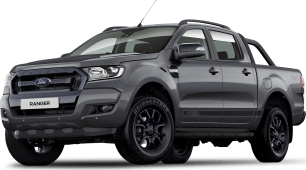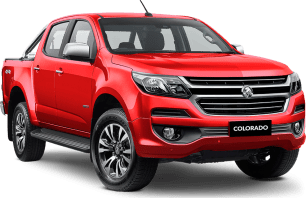The Ranger is a comfortable drive around town. Ford has also done a good job with NVH (Noise, Vibration and Harshness) suppression too, particularly with the 2.0-litre diesel and its under-bonnet surrounds.
It’s an excellent engine for this application, with acceleration that feels more energetic than the ‘high performance’ Raptor, even though they share the same drivetrain. The XLT fairly leaps away from standing starts at full-throttle and surges towards triple km/h figures with a vigour not shared by its desert raider cousin.
We can only put this down to two variables. One is the XLT’s superior power-to-weight ratio, because it’s a massive 135kg lighter. The other is that the Raptor’s larger diameter tyres result in slightly taller gearing. So if you want more get-up-and-go, the XLT would be the better option.
The intelligent 10-speed auto is a smooth operator, with largely seamless shifts between its closely-spaced ratios. The over-driven top three are great for fuel economy at highway speeds although top gear in full lock-up seems a bit tall for this engine, given that peak torque is between 1750-2000rpm yet it’s only doing 1500rpm at 100km/h and 1600rpm at 110km/h.
You can also select ‘S’ for sport and shift gears manually using the toggle switch. However, we found it worked best when left in auto mode, as it quickly adapts its shift protocols to suite different driving styles and begins downshifting with enthusiasm when you start braking, particularly on steep descents.
We put the XLT’s 1003kg payload rating to the test by strapping 890kg into the tub, which combined with the driver resulted in a 990kg payload. The stout rear leaf springs compressed only 60mm (about half that of any coil-spring ute we’ve tested) resulting in a near-level ride height with plenty of rear bump-stop clearance.
With this load it maintained good handling and ride quality over a variety of sealed and unsealed roads. If anything, such a large amount of sprung weight improved the ride, with a hint of bottoming only being detected on the largest of washouts and road dips.
It also powered effortlessly up our 13 percent gradient 2.0km set climb, self-shifting back to fourth gear at 2400rpm all the way to the top, with the right foot barely touching the accelerator pedal. Most impressive.
Engine braking on the way down, though, was minimal but not unusual for small capacity diesels. Our only other gripe was a slight but noticeable driveline shudder from standing starts between 0-10km/h. It was also evident when unloaded, only less noticeable.
































